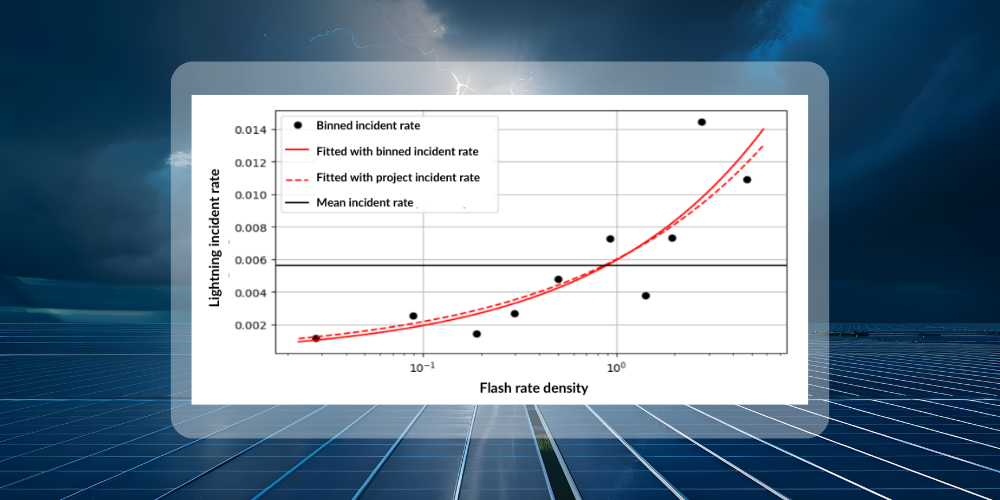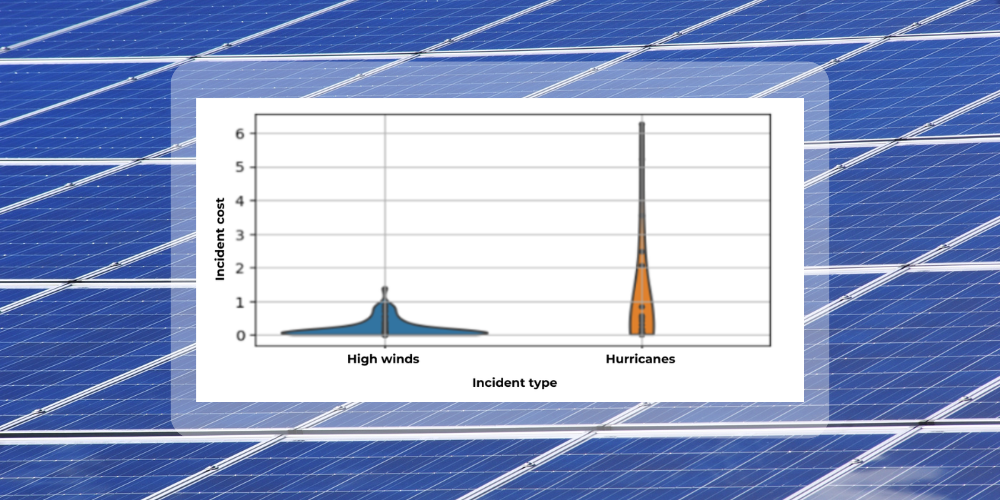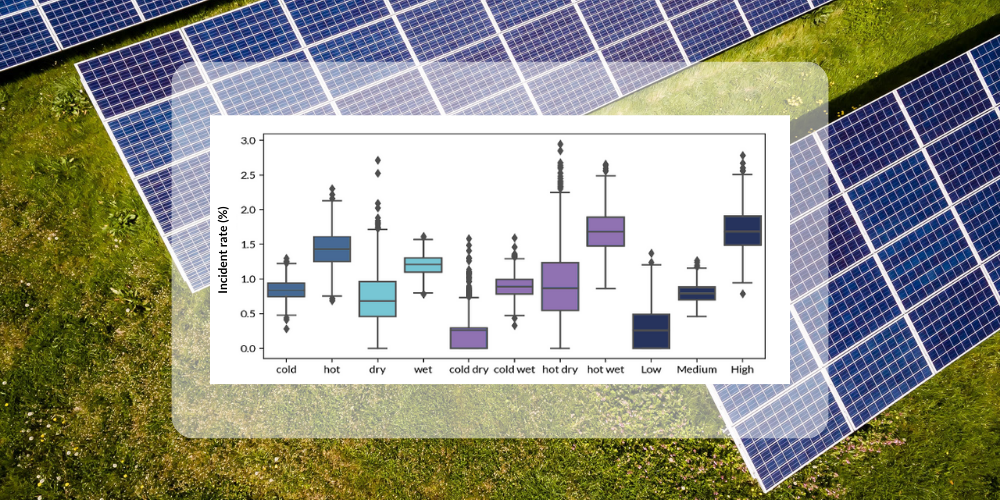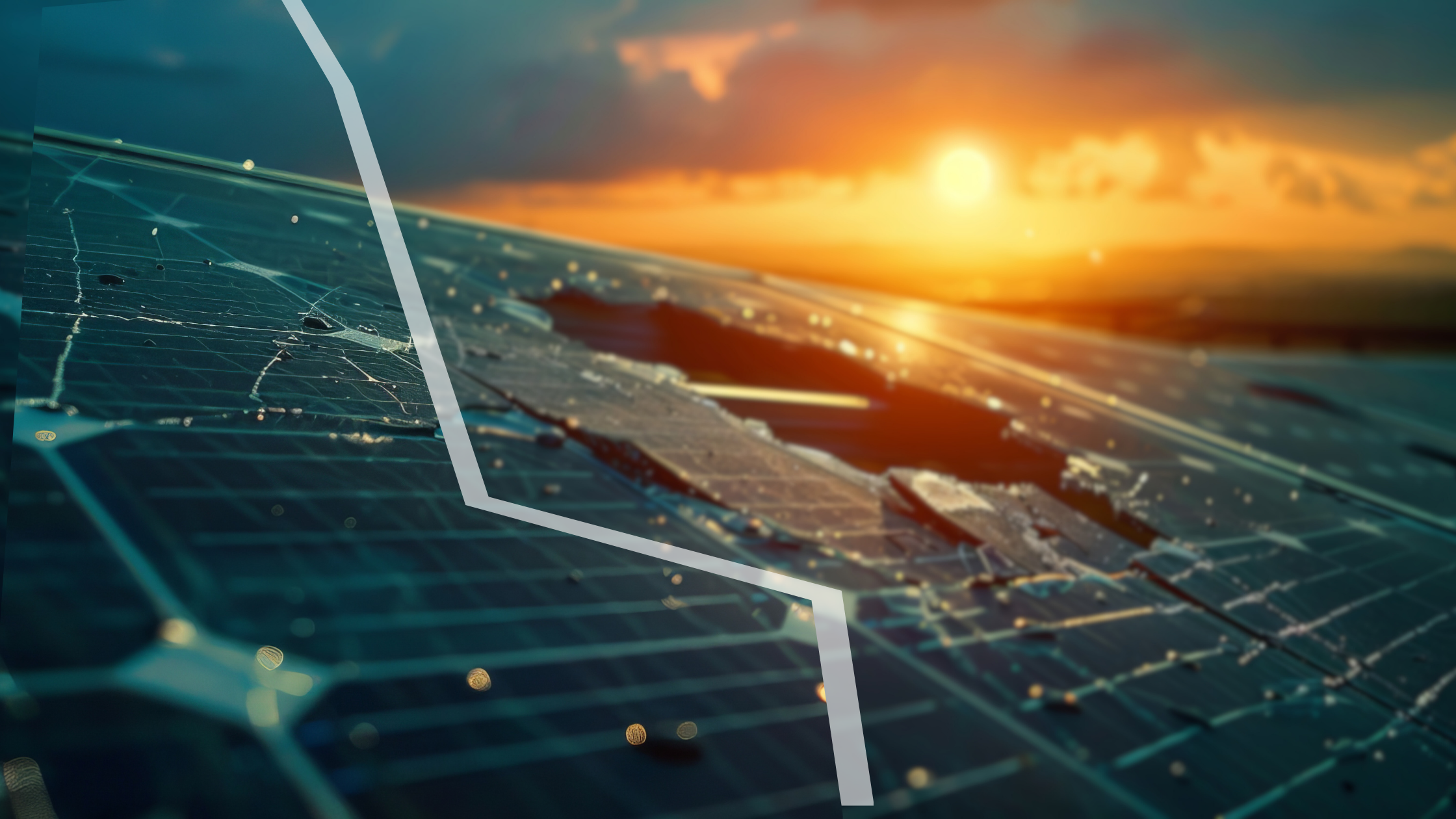Lightning strikes are a common weather phenomenon — with over 40 million lightning strikes in the U.S. each year — and solar projects should be prepared to face these disasters.
Lightning is very destructive to PVs and is one of the top causes of damage to solar projects1of all natural  catastrophes, responsible for 9.8% of solar natural catastrophe incidents in Clir’s database2. The main driver of the frequency of lightning strikes is the location of the farm, with farms located in tropical or mountainous regions particularly impacted. Owners should be aware of the physical and financial risks that lightning damage can cause.
catastrophes, responsible for 9.8% of solar natural catastrophe incidents in Clir’s database2. The main driver of the frequency of lightning strikes is the location of the farm, with farms located in tropical or mountainous regions particularly impacted. Owners should be aware of the physical and financial risks that lightning damage can cause.
Physical and electrical damages
Lightning can cause physical and electrical damage to solar assets. The most common cause of failures due to lightning is direct strikes on any electrical component of the farm. This can cause power surges, which occur when there is a sudden increase in voltage, and can cause damage to sensitive electrical components in the PV system.
Strikes to electrical components can also cause a meltdown or fracture in its electronic components. Moreover, lightning-induced surges lead to short-circuit failures in the system which can cause permanent damage as the energy of a lightning strike far exceeds the maximum energy that can be tolerated by the equipment. The extremely high transient current and transient voltage caused by the lightning strike renders solar PV systems and other electronic components, such as inverters, vulnerable to serious damage.
Direct hits by lightning strikes with high severity will likely always cause some degree of damage, but particularly if the system is not properly grounded.
Lightning protection can reduce damage, but inadequate protection systems can elevate risks. If defects are present, lightning strikes that are less severe can have a major impact on components. Also, the ability of a lightning protection system to withstand lightning strikes may be affected by previous strikes as they can weaken the system. Therefore, catastrophic lightning damage can occur if smaller initial damage from strikes, such as microcracking, are not identified and fixed efficiently.
The main drivers of the frequency of incidents are farm capacity and site age. Larger PV farms are often more complex in terms of infrastructure and operations, increasing the possibility of technical failures, maintenance issues and operational challenges in the event of a lightning event. Additionally, there is more revenue at stake on larger farms the event of disruptions or damage.
Newly installed wind farms can experience teething issues, leading to elevated risk levels. During the first two years of operations, new farms may encounter unforeseen technical glitches, design flaws or construction defects that could lead to equipment malfunctions or system failures, which can be intensified during electrical storms. On the other end of the spectrum, aging infrastructure becomes more prone to wear and tear, degradation and technical failures. This can lead to increased frequency of maintenance issues, equipment malfunctions and system failures during lightning strikes.
Costs associated with lightning damages
Lightning is a major issue in solar PV farms because it causes damage that often requires high replacement and repair costs, as well as power interruption.
Lighting causes premature ageing of bypass diodes, power semiconductors, and input and output circuits of data systems, which all have high repair costs when damaged. It also can cause major damage on the electronic components and place them out of service immediately. Oftentimes, it only makes small damages and the cost to repair these damages is minimal. However, if the small damages are not noticed and repaired and the PV farm continues to operate, this can develop into significant issues which may require equipment replacement. The cost of this repair will be very high.
After failures occur, having spare parts on site can reduce associated downtime and lost production.
Since lightning incidents are common and costly —9.8% of total risks from Clir’s database1 are caused by lightning, with the average cost of claim amounting to $73,394 — owners need to be prepared for the financial and physical risks of lightning strikes.
Mitigating lighting risks
Lightning protection systems can help prevent damage to your PV farm by redirecting lightning strikes to the ground. The system typically includes lightning rods, conductors, and a grounding system.
Installing surge protection devices can also help protect your PV farm's electrical components from power surges caused by lightning strikes. These devices can be installed at various points throughout the system to protect against different types of surges.
Regular inspections are the key to minimize the cost of lightning strike damage. Ideally inspection should be carried out on all combiners, inverters, transformers and switchgear after every storm. Targeted inspections, which only inspect components that are most likely to be struck by lightning, are also useful. What
Lightning protection systems should at a minimum meet the IEC requirement but understanding the adequate protection for your farm and location can be challenging. Clir recommends using industry data from peer farms to understand what lightning protection system is right for your farm.
Clir leverages over 250 GW of operational and risk data and can compare risks based on a farm’s OEM or location to understand the unique risks facing your solar farm.
Resources
- “Do Solar Panels Attract Lightning?” Conserve Energy Future. https://www.conserve-energy-future.com/do-solar-panels-attract-lightning.php
- Clir’s 250+ GW dataset of operational and risk data.





